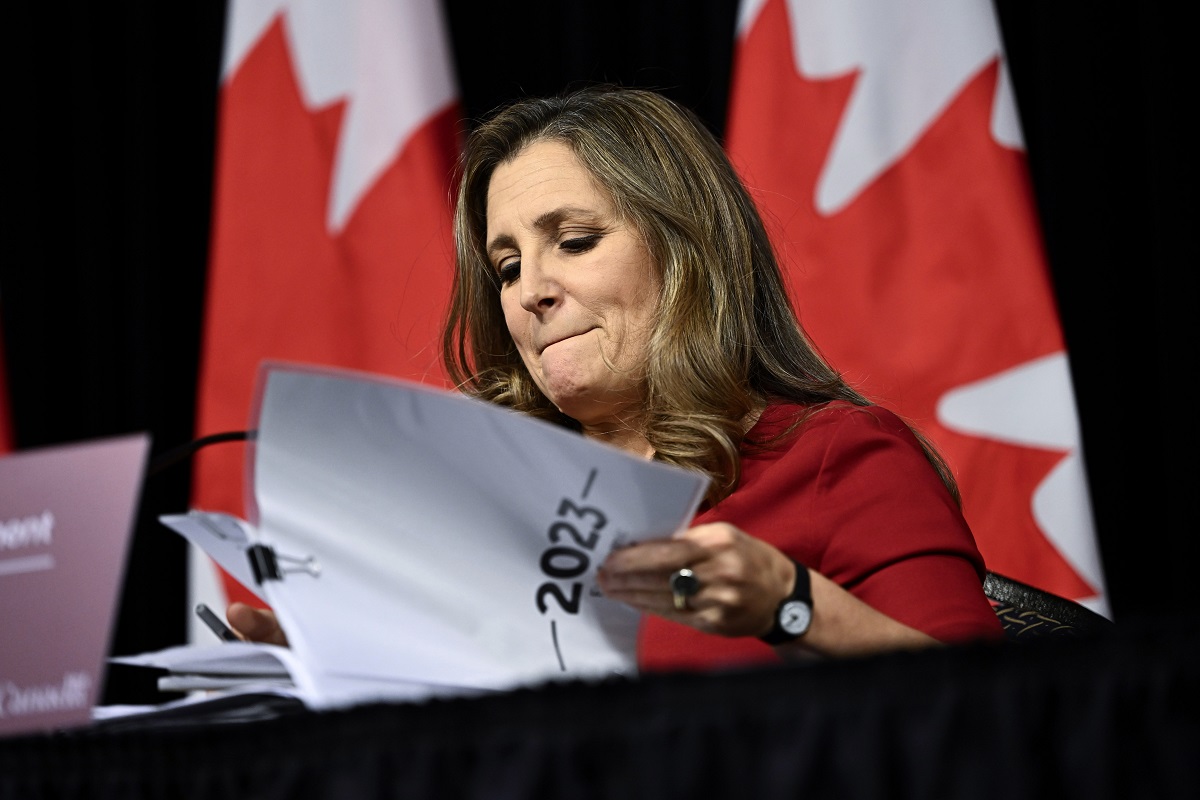
OTTAWA--Canada's economy contracted sharply in the latest quarter, a further sign of lackluster activity that looks set to anchor expectations the central bank is done lifting interest rates.
Gross domestic product, a broad measure of goods and services produced across the country, declined at a seasonally adjusted annualized rate of 1.1% for the three months, Statistics Canada said Thursday.
That almost wiped away growth of 1.4% in the second quarter and represents a big slowdown from a 2.5% expansion Canada's economy saw in the first three months of 2023. The country avoided two back-to-back quarterly contractions, a measure of recession, after a revision to second-quarter GDP that was previously estimated to have dipped 0.2%.
Monthly economic figures are more positive, and suggest a stronger hand-off to the new quarter with early industry-level data suggesting the economy expanded last month. Still, economists note the quarterly picture shows household consumption has stagnated and consumers are once more saving rather than spending in a high interest-rate environment, which should keep the Bank of Canada sidelined at next week's policy meeting.
"The big picture is that the Canadian economy is struggling to grow, yet managing to just keep its head above recession waters," Douglas Porter, chief economist at Bank of Montreal, said. It "reinforces the point that the bank is done hiking rates but doesn't really advance the cause for rate cuts, as the economy isn't showing signs of further deterioration early in 4Q."
The contraction in the third quarter contrasts sharply with a 0.1% quarter-on-quarter advance expected by economists and 0.8% growth the Bank of Canada has projected.
The fall in GDP was driven by a decline in exports thanks to a sharp drop in shipments of refined petroleum products following a big increase the previous quarter. The smallest buildup of inventories since the third quarter of 2021 also weighed on GDP, with manufacturers recording shrinking inventories after six consecutive months of growth.
Consumer spending was flat for a second quarter running, while the household savings rate rose in nominal terms with a rise in disposable income as a softening labor market and weaker relative gains in financial markets were countered by higher government transfers and the introduction of a grocery rebate for some households.
Helping soften the drop in GDP, government spending increased and housing investment rose after declines the previous five consecutive quarters.
While progress getting consumer inflation back to the Bank of Canada's 2% target has been slow, it has eased considerable from a peak in the middle of last year and GDP is projected by the bank to remain modest through most of 2024 at just under 1%. The housing market, until recently an engine of economic growth for Canada, has shown signs of struggling in recent months following a recovery early in the year. And central bank officials note that the economy looks to be coming back into balance and corporate pricing behavior is beginning to normalize.
In a speech last week, central bank Gov. Tiff Macklem said aggressive monetary policy tightening that lifted the policy rate to 5% from 0.25% in 16 months, with the most recent back-to-back increases in June and July, had cooled an overheated economy and taken the steam out of inflation. While he cautioned it was too soon to discuss cutting rates, he said he expects output to "remain weak for the next few quarters, which means more downward pressure on inflation is in the pipeline."
Data for September showed industry-level GDP edged up 0.1% from the month before, a tick stronger than the data agency's advance estimate for GDP to have been essentially unchanged and helped by an increase in manufacturing after falls the previous three months and continued gains in construction activity.
Statistics Canada's advance estimate suggests a 0.2% rise in industry-level GDP for October, with increases in mining, quarrying and oil and gas extraction, retail trade and construction but a fall in wholesale trade.
"Through all of the noise caused by revisions and swings in trade and inventories...the underlying trend remains one of modest growth on aggregate but a decline in activity in per capita terms," said CIBC Capital Markets senior economist Andrew Grantham, who expects rate cuts could be in the cards in the second quarter of next year given the sluggish trend in economic activity and declines in job vacancy rates.
Write to Robb M. Stewart at robb.stewart@wsj.com







:quality(80)/cloudfront-us-east-1.images.arcpublishing.com/morningstar/P3MDVUXN7VAZVPJZPL3YZ6MCTA.png)
:quality(80)/cloudfront-us-east-1.images.arcpublishing.com/morningstar/VYKWT2BHIZFVLEWUKAUIBGNAH4.jpg)
:quality(80)/cloudfront-us-east-1.images.arcpublishing.com/morningstar/P3MDVUXN7VAZVPJZPL3YZ6MCTA.png)










